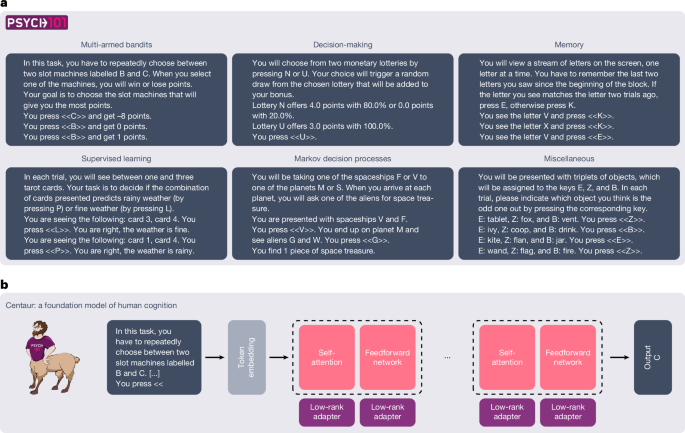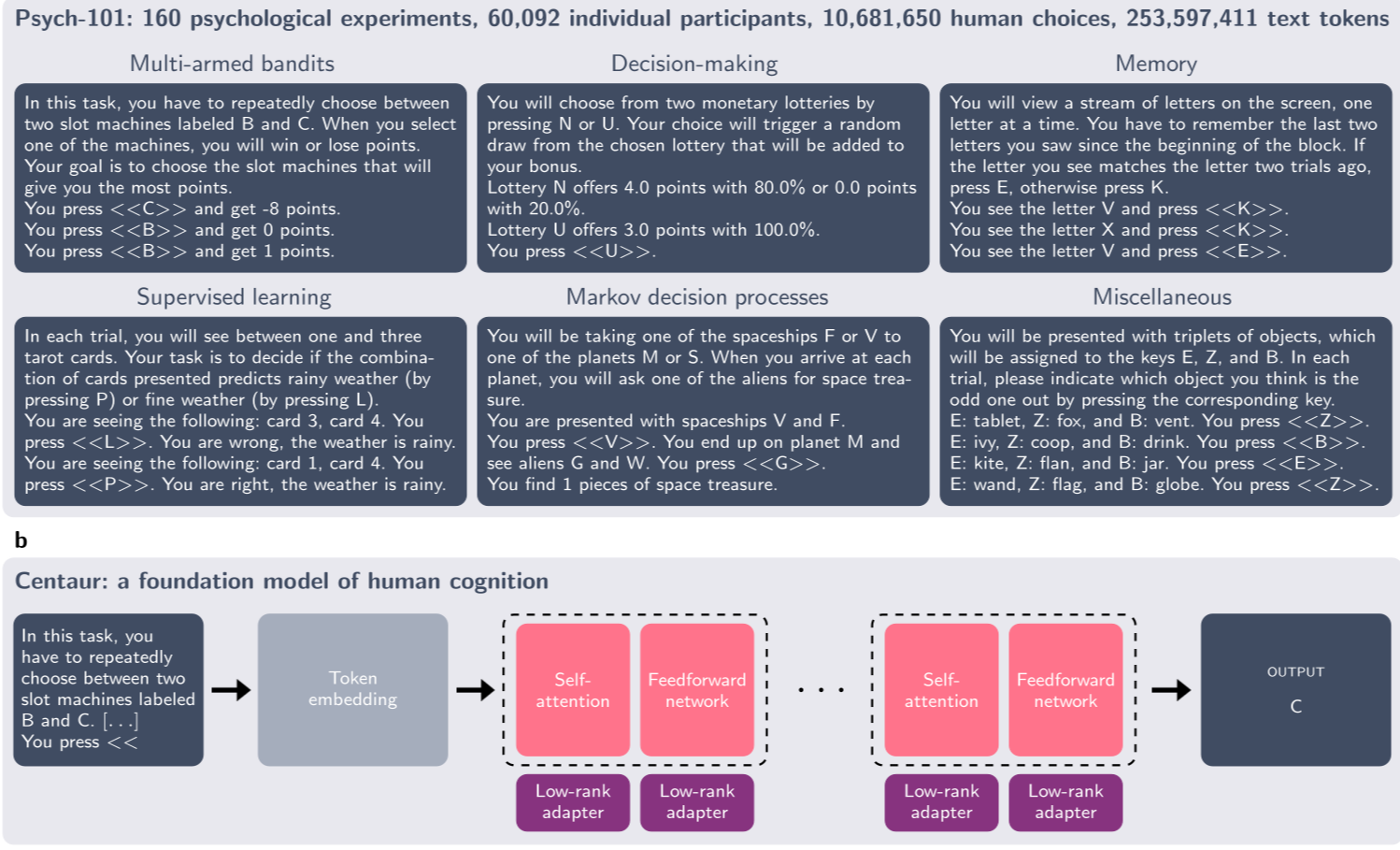A Helmholtz Müncheni Intézet kutatói a Nature folyóiratban 2025. július 2-án publikálták az úttörő Centaur modellt, amely képes megjósolni és utánozni az emberi viselkedést különböző helyzetekben. A Marcel Binz vezette kutatócsoport létrehozta a Psych-101 adatbázist, amely 160 pszichológiai kísérletből származó több mint 10 millió döntést tartalmaz 60.000 résztvevőtől, majd erre építve fejlesztették ki a Centaurt a Llama 3.1 70B nyelvmodell finomhangolásával. A modell nem csupán ismert kísérleti helyzetekben teljesít jól, hanem olyan új feladatokban is, amelyekkel korábban soha nem találkozott – legyen szó akár megváltozott kerettörténetekről, módosított feladatstruktúrákról vagy teljesen új tudományterületekről.
A Centaur minden teszten jobban teljesített, mint az eredeti nyelvmodell vagy a szakterület-specifikus kognitív modellek, és meglepő pontossággal jósolta meg az emberi reakcióidőket is. Bár kizárólag viselkedési adatokon tanították, a modell belső reprezentációi jobban illeszkednek az emberi agyi aktivitáshoz, mint az alap nyelvmodellé – ezt fMRI-vizsgálatok is alátámasztják. A kutatók szerint a Centaur különlegessége, hogy egyesíti a érthetőséget és a pontosságot: nemcsak megjósolja az emberi viselkedést, hanem segít megérteni a mögöttes kognitív folyamatokat is, például azt, hogyan kombinálnak az emberek különböző heurisztikákat a többattribútumos döntéshozatal során.
A jövőbeli tervek között szerepel az adatkészlet bővítése további kognitív területekkel és egyéni különbségekkel, valamint a modell belső működésének mélyebb elemzése. Eric Schulz intézetigazgató szerint: Óriási potenciált látunk ezekben a modellekben a kognitív folyamatok megértésére, míg Binz hozzáteszi, fontos, hogy ezek a rendszerek átláthatóak és kontrollálhatóak maradjanak. A kutatást a Helmholtz Intézetben végzik, nem pedig technológiai vállalatoknál, ami lehetővé teszi, hogy a hangsúly a kognitív tudomány alapvető kérdésein maradjon, kereskedelmi szempontok helyett.
Források:
1.

2,

3.










